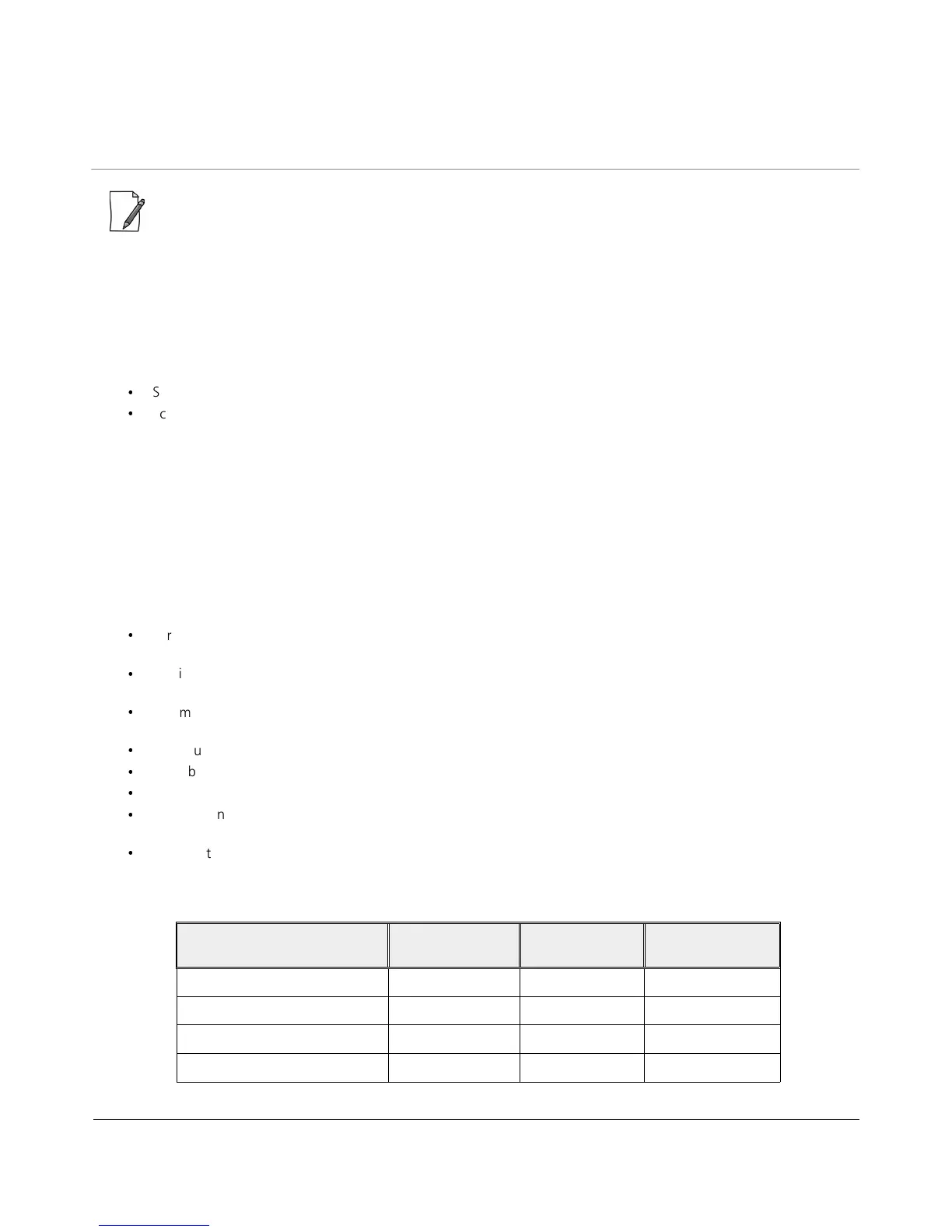Tsunami
®
800 & 8000 Series - Software Management Guide 131
: Two different VoIP rule names have been defined for each direction of traffic, Uplink (UL) and Downlink (DL), (index
numbers 4 to 7). This has been done to distinguish the proprietary nature of the Cisco VoIP implementation as
opposed to the more standard Session Initiation Protocol (SIP) signaling found, for example, in the Vonage-type VoIP
service.
5.6.1.2 Service Flow Class (SFC)
A Service Flow class defines a set of parameters that determines how a stream of application data that matches a certain
classification profile will be handled. You can create up to 32 different SFCs, including 8 predefined SFCs. Also, you can
create, edit, and delete SFCs where, each SFC contains the following parameters and values:
·
Service flow name
·
Scheduling type – Best Effort (BE); Real-Time Polling Service (RTPS)
– Best Effort Services: Best Effort Services are typically provided by the Internet today for Web surfing. In the
Tsunami
®
800 and 8000 devices, Best Effort parameters include Maximum Information Rate, Committed
Information Rate, Latency, Jitter and traffic priority.
– Real-Time Polling Services (RTPS): RTPS is designed to support real-time services that generate fixed or variable
size data packets on a periodic basis. Variable traffic can include MPEG video or VoIP with silence suppression. In
the Tsunami
®
800 and 8000 devices, RTPS QoS parameters include Maximum Information Rate, Committed
Information Rate, Latency, Jitter and traffic priority.
Time sensitive and real-time traffic should use RTPS (Including VoIP, Multicast Video and Serial Data). All other traffic
(Variable Data, Unicast traffic, Internet) should be scheduled and prioritized using the Best Effort Service Flows. For
QoS to function properly, ensure Interference is mitigated, keeping PHY and CRC errors at a minimum (<10/sec/avg).
Retransmission at the PHY layer can cause latency, jitter overhead, packet loss and lower than expected throughput.
·
Service Flow Direction – Downlink (DL: traffic from BSU/End Point A to SU/End Point B); Uplink (UL: traffic from SU/End
Point B to BSU/End Point A)
·
Maximum sustained data rate (or Maximum Information Rate (MIR) – specified in units of 1 Kbps from 8 Kbps up to
the maximum rate specified in the license.
·
Minimum reserved traffic rate (or Committed Information Rate (CIR) – specified in units of 1 Kbps from 0 Kbps up to
the currently specified Maximum Information Rate (MIR)
·
Maximum Latency – specified in increments of 1 ms steps from a minimum of 5 ms up to a maximum of 100 ms
·
Tolerable Jitter – specified in increments of 1 ms steps from a minimum of 0 ms up to the Maximum Latency (in ms)
·
Traffic priority – zero (0) to seven (7), 0 being the lowest, 7 being the highest
·
Maximum number of data messages in a burst – one (1) to sixteen (16), which affects the percentage of the maximum
throughput of the system
·
Entry Status – Enable, Disable, and Delete
The Traffic Priority with Scheduling Type and Committed Information Rate (CIR), defines the absolute Traffic Priority for a
specific Service Flow as given below:
Committed Information Rate
(CIR)
Scheduling Type Traffic Priority Absolute Priority
0 BE 0 0
0 BE 1 1
0 BE 2 2
0 BE 3 3

